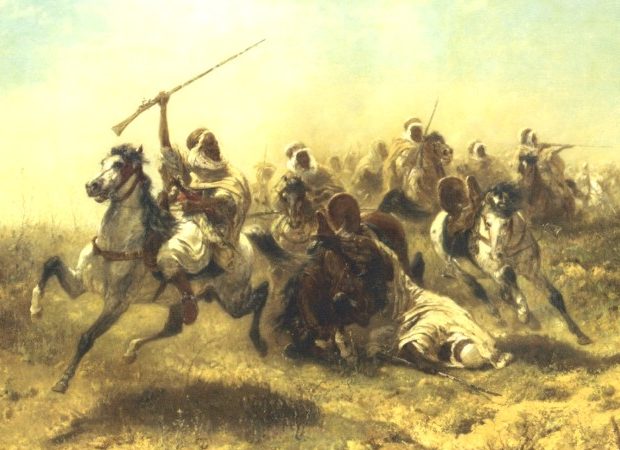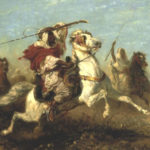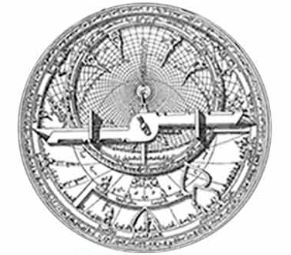
In his History of the Caliphs, Jalāl al-Dīn al-Suyūṭī traces the history of the Islamic Caliphate from the death of the Prophet Muḥammad to the fall of the last Abbasid caliph in Egypt. What distinguishes the writer's style is his accurate and continuous spatial and temporal narrative of the most important events and stages that characterized the rule of each caliph.
THE AUTHOR QUOTES the Islamic historian Al-Dhahabī’s report of the most prominent features of the year 143 AH, during the time of the Caliph Al-Manṣūr Abū Ja‘far Abdullah. The most important feature of that year was the codification of books of hadith, of jurisprudence, tafāsīr (commentaries)and maghāzī (‘raids’). The latter covered the beginnings of the course of Islamic history, and its first historian Ibn Isḥāq. Everything related to Islamic history and to the biographies of prominent people was based on the narratives and chains of transmission of Muslims themselves, and these were recorded many years after the death of the people concerned. But the most important question remains whether there are other external historical sources that coincided with the most signal events of the Muslims, especially in the era of Islam’s origins and consolidation.
The History of Heraclius by the Armenian historian Sebeos
The Jews sought help from the Arabs – Muḥammad was a missionary of the Bible – there was a political and military alliance – Jerusalem was the final goal.
Sebeos was an Armenian bishop and historian who lived in the second half of the seventh century AD. In this work he writes:
The Jews asked help from the Arabs, and introduced them to the relationship between them as detailed in the books of the Old Testament. Although they (the Arabs) were convinced of their intimate kinship, most lacked a sense of mutual co-operation, since religion separated them from each other. During that time a person appeared, a man from the sons of Ishmael named Muḥammad, a merchant who had gained prominence. He gave sermons on the way of Truth, assuming these to issue from divine command, and to these he expounded/revealed them exhorting them to acknowledge the God of Abraham, especially since he had been informed of the history of Moses. Because it had issued from on high, he commanded them to come together and unite in faith and renounce the veneration of absurd things that surrounded them. So they turned to the living God who had appeared to their father Abraham.
Muḥammad prohibited the eating of carrion, the drinking of wine, the telling of lies, and committing adultery. He said: “God promised this country to Abraham and his son (his descendants) after him, in perpetuity. This promise was fulfilled during the period when God loved Israel. But now, it is you who are the sons of Abraham, and God will keep His promise to Abraham and his posterity to you. Love only the God of Abraham, and go and take the country that God gave to your father Abraham. No one will be able to resist you in war, for God is with you”.
These events put the Islamic narratives in doubt, especially since they were written more than a century after the death of the Prophet
The war continues – the Arab expansion
Sebeos then adds:
These sons of Ishmael reached Araboth of Moab[1] in the territory of Reuben, for the Greek army was camped in Arabia. And coming upon them unexpectedly, they struck them with the sword and put to flight Theodore, the brother of the emperor Heraclius. And after returning they made camp in Arabia.
And when all the remnants of the people of the children of Israel assembled, they joined together, and they became a large army. And after that they sent a letter to the Greek king, and they said as follows: “God gave that land to our father Abraham and to his descendants after him as a hereditary possession. We are the sons of Abraham. You have occupied our land long enough. Leave it in peace, and we will not come into your land. Otherwise, we will demand that possession from you with interest.” But the emperor did not accept this and did not respond agreeably to their demand, but he said: “This land is mine, and the lot of your inheritance is the desert. Go to your land in peace.”
And he began to raise an army, about 70,000, and he appointed one of his trusted eunuchs as a general for them and ordered them to go to Arabia. He stressed that they should not engage them in the war, but rather remain ready until he had assembled additional forces and had sent these to help them. The Byzantine brigades reached Jordan and crossed over it into the province of Petra, leaving their encampment on the riverbank. It then proceeded on foot to attack the Arab camp but they (the Arabs) had set up ambushes against a section of their forces. They placed many dwellings around their camp and positioned herds of camels, their feet bound together, around the encampment and its tents. Such were their fortifications for their camp.
Now the animals were exhausted from the travelling, and therefore the Byzantines cut through the fortifications and killed them. However the men lying in ambush surprised them from their hiding places and clashed with them. Fear of God seized the Byzantines; they turned round to flee from them but were unable to because of the quicksand in which their legs were mired.
Great alarm prevailed because of the heat of the sun and the swords of the enemies that whirred around them. All the commanders fell and were exterminated. More than two thousand men were slaughtered while only handful of survivors fled to seek safety. The Arabs crossed Jordan and camped at Jericho, after which the people of the country panicked and everyone submitted. That night a number of Jerusalemites took the cross of the Lord and all the vessels from the churches of God and fled by boat to the palace of Constantinople, and the rest of Jerusalem asked for a covenant (from the Ismailis) and surrendered to them.
The emperor of Byzantium could no longer mobilize troops against them. The Ismailis went on to divide their army into three sections, one of which headed to Egypt taking over the land as far as Alexandria. The second division headed north towards the Byzantine Empire. In the blink of an eye, they captured territory from the sea to the banks of the mighty Euphrates, as well as the city of Urfa and all the cities in Mesopotamia. On the other side of the river, the third section was sent to the east, to face the kingdom of Iran.[2]

Suggested Reading
The reality of the Arab invasions – from non-Islamic sources
The doctrine of Jacob
It is 634 AD and Muḥammad is still fighting in Palestine. This is confirmed by a letter sent to his brother Justus by a Jew named Abraham who was living in Palestine. He in turn sent it on to Jacob, to be included in the so-called Doctrina Jacobi. In the letter we read the following:
I (Abraham) visited an old man who was learned in the Scriptures, and I said to him, ‘What can you tell me about the prophet who has appeared with the Saracens?’ And he said to me, groaning loudly, ‘He is false, for prophets do not come with a sword and a war-chariot. Truly the things set in motion today are deeds of anarchy … But go, master Abraham, and find out about this prophet who has appeared.’ And when I, Abraham, investigated thoroughly, I heard from those who had met him that one will find no truth in the so-called prophet, only the shedding of human blood. In fact, he says that he has the keys of paradise, which is impossible.”
These historical sources raise significant question marks and reveal startling facts, especially as they are sources hailing from the very period of the emergence of the Islamic religion and which chronicle very early and important events. These events put the Islamic narratives in doubt, especially since these last were written more than a century after the death of the Prophet of Islam, and more importantly, are the product of the intellectual and political censorship of regimes, about which the least that can be said is that they were the most violent and brutal in Islamic history.[3]
[1] That is, the Wādī ʿAraba/Aravah, part of the Jordan Rift Valley that runs between the Dead Sea and Aqaba/Eilat and forms the border between modern Israel and Jordan.
[2] For a list of downloadable works on this history, see the Almuslih Library, section Early Non-Muslim Sources: An Armenian Chronicle Պատմութիւն Սեբէոսի. On this passage, see, in particular, Shoemaker, S: A Prophet Has Appeared: The Rise of Islam through Christian and Jewish Eyes, A Sourcebook, pp.63-70. Shoemaker notes how this report “seems to indicate something very much like an interconfessional community of the Believers … a religious movement that initially welcomed Jews and even Christians to full membership in the community, requiring only a simple profession of faith in “God and the last day” and that it indicates “the earliest recoverable stratum of Islamic self-identity. They envision a religious community comprised of both Jews and Arabs, who “share the sacred mission of carrying out the divine scheme, which is to renew the ancient Exodus and to drive the Byzantines out of the Promised Land.”(Ed.)
[3] On this work see the Almuslih Library, section Early Non-Muslim Sources: The Teaching of Jacob Διδασκαλία Ίακώβου Νεοβαπτίστου where the full text can be downloaded, as well as studies. On this passage, see, in particular, Shoemaker, S: A Prophet Has Appeared: The Rise of Islam through Christian and Jewish Eyes, A Sourcebook, pp.39-44.
